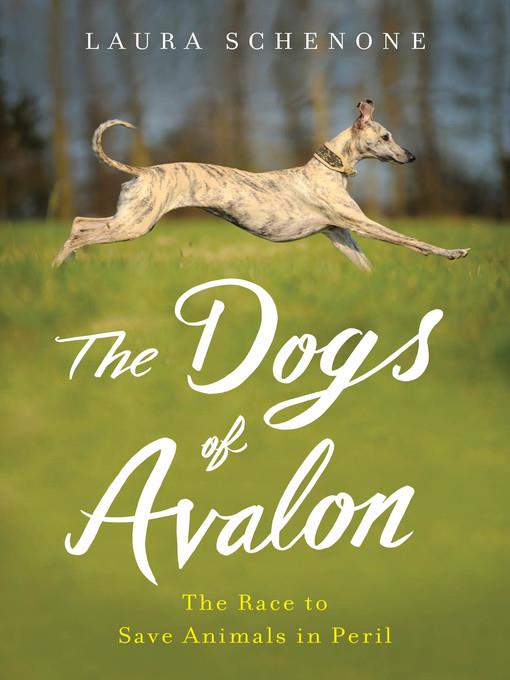
The Dogs of Avalon
The Race to Save Animals in Peril
کتاب های مرتبط
- اطلاعات
- نقد و بررسی
- دیدگاه کاربران
نقد و بررسی

June 19, 2017
Schenone (The Lost Ravioli Recipes of Hoboken) wasn’t much of an animal lover until she met Daisy, a rescue greyhound who introduced her to the seamy underworld of dog racing and the thousands of former racing dogs discarded or euthanized once their performances began to wane. Interest piqued (and greyhound adopted), Schenone set off to meet the pioneers of the greyhound rescue movement, whose victories and struggles are shared here. The author is clearly a champion of her cause, extolling the virtues of the breed and excoriating the dog-racing industry—now in decline due to greater awareness. Schenone’s dramatic account of the major and minor events in the evolution of the animal welfare movement in general and greyhound rescues in particular is truly moving. The book gets bogged down, though, as Schenone tries to weave in numerous subplots, such as the futile attempts to bring abusive dog racers and puppy mill breeders to justice and a Hatfields-and-McCoys battle between Irish Traveller clans that spans an entire chapter. Animal-welfare advocates and dog lovers are sure to appreciate Schenone’s reportage as well as the courage of the men and mostly women who led the greyhound rescue charge, but the book is circuitous and, as a result, slow.

June 15, 2017
The story of the author's adoption of a greyhound as a companion for her son and how she became involved with a fascinating group of animal rescuers.It began in New Jersey when the author sold a vintage stove to a woman named Elizabeth, who had recently returned from a visit to Ireland. She suggested that the author's son might like an Irish greyhound dog that she had recently rescued. He did, and she became a cherished member of the household, and a friendship between Schenone (The Lost Ravioli Recipes of Hoboken: A Search for Food and Family, 2007, etc.) and Elizabeth was born. Through Elizabeth, the author met Marion Fitzgibbon, the leader of a remarkable animal rescue group in Ireland, the Irish Society for the Prevention of Cruelty to Animals. The members of the ISPCA first came together because of a shared concern to find homes for stray street dogs. Over time, their goal became more ambitious: to create an animal sanctuary. An anonymous donation of 20,000 pounds enabled Fitzgibbon to purchase land for the establishment of a Limerick Animal Welfare Circle. For a time, greyhound racing had been a popular sport in Australia, England, Ireland, and the U.S. Throughout the narrative, Schenone smoothly interweaves her personal story with a history of the breed. As she notes, "images of greyhound-like dogs--with their deep-chested, slim-waisted, long-legged forms--appear in Western art going back thousands of years. They race and hunt and pose on Egyptian pottery and tombs, and in ancient Greek and Roman sculptures." Cruel treatment of the dogs when they could no longer race or hunt provided the original basis for concern by animal activists who sought adoptive homes for them. Fitzgibbon was also an advocate for itinerant Travelers. As a result of bigotry toward them, she received threats that her dogs would be killed, but fortunately, they were never acted upon. An engrossing account of greyhounds, their owners, and their champions.
COPYRIGHT(2017) Kirkus Reviews, ALL RIGHTS RESERVED.

June 15, 2017
What motivated James Beard Award-winning food historian Schenone (A Thousand Years Over a Hot Stove; The Lost Ravioli Recipes of Hoboken) to write a book about animal welfare? It began with her selling an old stove and her ensuing encounter with animal rescuer Elizabeth. From the start, Schenone shows that the heart of the animal welfare community lies in people, mostly women, who possess an innate drive to help animals and who connect with others in order to accomplish this. Through Elizabeth, Schenone adopts Lily, a lurcher (a mix of sighthound and other breeds), and meets Irishwoman Marion Fitzgibbon, whom she chronicles for much of the book. Along the way, readers learn about Irish history, including the subculture of Travellers (Irish nomads), whom Fitzgibbon also aids. The author perfectly captures the ethos of veteran animal advocates and the obstacles in their work. Schenone's lovely prose captivates, and her mostly pragmatic perspective complements the subject matter. In Fitzgibbon, readers have a true animal champion. VERDICT While other important aspects of the global animal welfare and rescue movements are addressed, this book is most engaging in its focus on Fitzgibbon's crusade to bring animal welfare issues to mainstream Irish culture.--Meagan Storey, Virginia Beach
Copyright 2017 Library Journal, LLC Used with permission.

August 1, 2017
Schenone (The Lost Ravioli Recipes of Hoboken, 2007) admits she sometimes thought of animal advocates as having misplaced allegiancesuntil she met a few dedicated people, women mostly, who have raised worldwide awareness of animal welfare. In Ireland, greyhound racing has been popular for decades, but the racing life for a greyhound is short, and, until quite recently, the Irish have considered greyhounds mean and unfit for adoption. A staggering number of retired dogs are euthanized. Sometimes, though, retired greyhounds are shipped to other countries, where they race for a few more years but are often ill-treated. Enter Marion Fitzgibbon and women like her who have worked tirelessly for decades to improve the lives of greyhounds, and all animals. Fitzgibbon's advocacy has helped to bring better living conditions for working dogs and, best of all, has helped change public perception about greyhounds. Now, greyhound adoption is widely accepted; Schenone owns one such dog. Though this is sometimes gut-wrenching in its vivid depiction of animal suffering, animal lovers will find it an eye-opening must-read.(Reprinted with permission of Booklist, copyright 2017, American Library Association.)

























دیدگاه کاربران